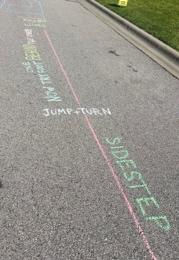Voluntary Stuttering: Building Confidence in People who Stutter
- All Care Therapies

- Oct 4, 2022
- 2 min read

Emotions and Stuttering
People who stutter often experience emotions such as fear, shame, and anxiety around their stuttering, and this can negatively impact their quality of life (for example, feeling anxious or scared when talking to others). A main goal of therapy when working with people who stutter (especially with adults who stutter) is to try to reduce or eliminate these negative emotions. This will help the individual become more comfortable and confident in who they are as a person who stutters. One strategy for doing this is using voluntary stutters.
What Are Voluntary Stutters?
Voluntary stutters are stutters that are made on purpose by a person. True or real stutters, on the other hand, are those that are not made on purpose. In the field of speech-language pathology, voluntary stutters are a useful strategy that can help to reduce the fear and negative emotions that are associated with stuttering. When a client stutters on purpose, they are more in control of the stutter and the situation, helping them to identify and play with their stutters. By practicing stuttering on purpose, the stutter itself becomes less scary over time. This can help the client become more comfortable with how it feels to stutter, which can then lead to less fear of speaking and interacting with others.
Why Use Voluntary Stuttering?
By reducing the fear and negative emotions related to stuttering, voluntary stuttering can help build the client’s confidence. It also allows them to see how it feels to stutter, and explore what they would do during a real stutter. As the client gains confidence in their speech, they can even begin to practice other therapy methods, such as discussing their stuttering or modifying their stutters.
Using voluntary stutters in therapy is a great way for the client to learn about and practice their stutters in a safe environment. Often, the more a person learns about their stutter, the more comfortable they feel about it. Eventually, this can lead to a change in perspective, where the client no longer experiences the fear or anxiety that they previously had when speaking to others.
References
Byrd, C. T., Gkalitsiou, Z., Donaher, J., & Stergiou, E. (2016). The client's perspective on
voluntary stuttering. American Journal of Speech-Language Pathology, 25(3), 290–305. https://doi.org/10.1044/2016_ajslp-15-0018
Guitar, B. (2019). Stuttering: An integrated approach to its nature and treatment. Wolters
Kluwer.




Comments